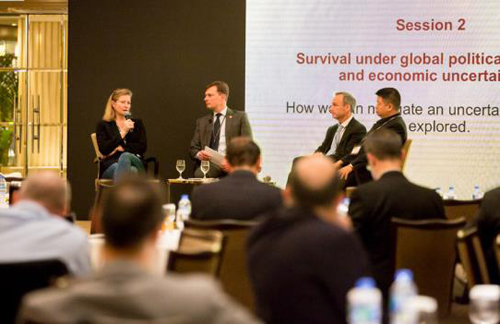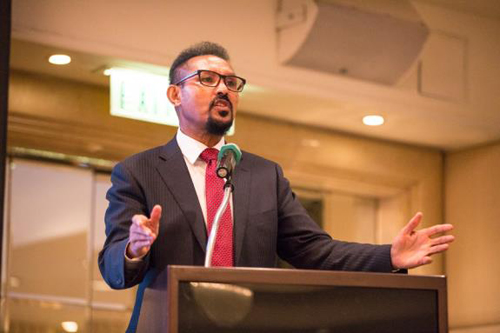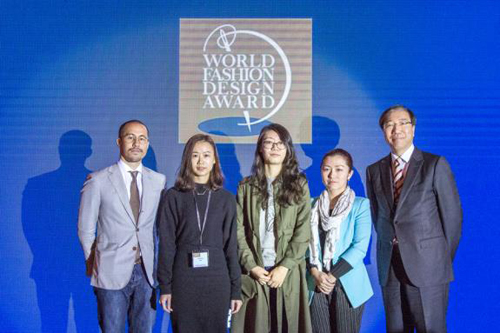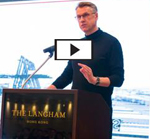FW
During the last financial year, sales of khadi products went up 33 per cent. Sales of village industries produce grew 24 per cent. There has been a huge demand for products such as honey, soaps, cosmetics, furniture and organic foods, which are produced by village industries and many of which are run by women. Domestic and international fashion designers prefer to work with sustainable and natural fabrics like khadi. Millennial shoppers are concerned about the clothes they wear or whether the products they use create jobs. Since khadi cloth is handspun, and its products are mainly created by artisans in rural areas, the brand invokes good vibes in consumers. The target is to double khadi sales by 2018-19.
A survey in 21 overseas markets revealed, khadi was the most recalled Indian brand, along with yoga. So the Khadi & Village Industries Commission (KVIC) is now looking at exports and aiming to make khadi an international brand. KVIC has an unique model, selling through government-owned stores as well as other retail outlets. In fact, KVIC is one of the most underrated companies in India and has IPO potential. While low production growth was a drag on sales in recent years, during the last fiscal khadi output grew by 31 per cent.
The textile industry wants an uniform levy of five per cent on all textile and clothing products under GST (Goods and Services Tax). The assumption is such a levy would ensure smooth migration of the entire textile value chain to the GST tax structure with full compliance, create a win-win strategy for all stakeholders and bring substantial revenue to the exchequer when compared to existing revenues.
The Indian textile industry feels net revenue will double if the GST rate is fixed at the lowest slab of five per cent without any exemption across the value chain. The industry wants existing export benefits, including duty drawback rates, to be continued for some time after the implementation of GST as the industry has just begun taking advantage of these schemes and grabbing global export opportunities.
Sectors like handlooms could be given benefits from tax refunds under the direct benefit transfer system. Free trade agreements with potential importing countries, especially the European Union and Britain, would help as the strong rupee and high import tariffs of up to 20 per cent on various textile products in almost all major importing countries have made the Indian textile and clothing industry uncompetitive.
Indonesia wants a bilateral trade deal with the US. Trade between the countries was around $25 billion in 2016, the lowest since 2010. The US deficit in trade stood at more than $13 billion. The US wants Indonesia to further open up its $900 billion economy to businesses. The US is seeking to cut trade and investment barriers to create a truly level playing field. This forms the background to the collapse of the Trans-Pacific Partnership, a sweeping, 12-nation trade-and-investment pact. Indonesia wasn’t one of the dozen nations but had expressed interest in joining the partnership at a future date.
Indonesia has been seeking to draw new foreign investment to help build railways and ports. US investors are among the biggest investors in Indonesia but face problems with rule of law and cumbersome policies such as local-content requirements. Indonesia’s priority is to boost economic growth. The rate has been hovering around five per cent due to global weakness and a mixed-investment climate. The target is to deliver seven per cent growth by the end of 2019. Indonesia is Southeast Asia’s largest economy. In dollar terms, foreign direct investment slipped in 2016. But Chinese investors have evinced interest.
India’s cotton area is forecast to increase by seven per cent in 2017-18. Assuming yield is similar to the five-year average, production could increase by three per cent. Similarly, China’s cotton area may expand by three per cent due to the stable cotton policy and high cotton prices. Production in China is expected to rise by one per cent. Harvested cotton area in the US is expected to grow by 12 per cent and production could grow by eight per cent.
Unlike other top cotton producers, area in Uzbekistan is expected to dip four per cent in accordance with plans to reduce areas where yields are low and use them for other agricultural products. However, plentiful soil moisture may improve the average yield by one per cent, which will limit the loss in output. Uzbekistan’s cotton production is projected to decline by two per cent.
Cotton area in Brazil and Australia is forecast to increase by two per cent and three per cent. World cotton trade is projected to rise five per cent. Imports by Bangladesh are forecast to rise by three per cent, while imports by Vietnam may increase by 16 per cent. Imports by China are expected to increase by three per cent. Exports from the United States are projected to increase by 53 per cent. India’s exports are projected to decrease by 30 per cent.
Jaipur-based India Today Fashions is an apparel exporter. The quarter century old company manufactures women’s wear and children’s wear. It works with buying houses in the US, Sweden, Dubai, Australia and Japan. The exporter is also upgrading its CAD system and foraying into the domestic market.
Though Jaipur is a cost-effective garment manufacturing hub, especially when compared to Delhi-NCR, labor shortage is an issue which has forced India Today Fashions to start a new unit in Haryana. Since already some of its job work is being done in Haryana, the company thought of setting up its own factory there. Skilled labor is easily available in Haryana. The new factory will be operational very soon.
Despite initiatives for skill development and training in apparel manufacturing, and the presence of Apparel Training Development Centers, Jaipur has been facing a labor shortage for many years. A big chunk of migratory workers who belong to Uttar Pradesh or Bihar prefer to work in Delhi-NCR rather than Jaipur. Rajasthan has been associated with the production of color fabrics in the Maru-Gurjar tradition since ancient times. A sense of color-aesthetics has led to the use of colors and motifs intended for different occasions.
Dhyana van der Pols, a sourcing consultant for a group of European garment buyers recently said there are no back-up nation to Bangladesh for the global garment business at this moment and hence, business will continue to grow in Bangladesh. However, Bangladesh needs to shift production to value-added items from basic garment goods, she further added.
Bangladesh is the most attractive destination for European retailers among the six nations due to its competence in the supply of quality products at competitive prices, says a study. Garment exports accounted for nearly 85 per cent of Bangladesh's total products sold overseas in 2016. The country's share in the global apparel market is about 6 per cent.
Kurt Salmon, a leading global strategy consulting firm focused on the retail industry, conducted a survey on the basis of Production Cost Indices (PCI) among six garment producing nations: Bangladesh, China, India, Morocco, Myanmar and Turkey. Import data of apparel items from six countries between 2005 and 2015 were analysed. Among the six nations, China is in second because of higher costs of production and dearth of skilled workers.
Siddiqur Rahman, President, Bangladesh Garment Manufacturers and Exporters Association opines the country is passing through a dull season now, the future outlook is very positive. However, the study states in global comparison of Kurt Salmon, Bangladesh is the second most attractive destination after Cambodia. Globally, Cambodia is ahead of Bangladesh only because it uses more technology in production,
With dipping business abroad, Indian apparel exporters are thinking of focusing on the domestic market now. The European Union and the United States are traditional and core markets for India, but they are not doing too well. Many fashion retailers in the US have closed stores or have filed for bankruptcy. In the past few months over 18 fashion brands have shown negative results.
Struggling Indian exporters are creating an alternate client base. Fabric suppliers especially are focusing more on the domestic business and less on the export-oriented business, which requires certain compliance standards to be met. Other alternatives are China, the Middle East and African countries.
Exporters have different opinions on exploring emerging markets. For example, the Latin American market was seen as an alternative but that is also in trouble as their currencies are becoming weaker against the dollar. Exporters are wary of entering unknown territories and taking risks. They insist on analysing buyers before doing business as most insurance covers only post shipment and not the work in progress production. They want export associations to come up with a proposal of hiring financial experts, who can forecast any market and give proper guidance to members. In any case, the entire ecosystem of the supply chain will get affected.
Swiss companies Schoeller and Textil color have collaborated to create a new auxiliary concept used in polyester dyeing called ‘Ecodye’ technology. It is supposed to accelerate the dyeing process and, in turn, cut costs and preserve environment.
The new eco dye auxiliary concept allows eco-friendly and cost-saving dyeing processes for polyester yarns and piece goods. It shortens the heating phase, thus accelerating process time by more than 30 per cent. At the same time, it reduces energy consumption by 20 per cent and the water requirement by 2per cent as the goods can be cleaned in the cooling dye bath. In addition, eco dye improves the dyeing levelness in polyester textiles.
The companies’ goals were to provide textile customers with a technology that yields good dyeing levelness; avoids spots and dye agglomeration; avoids precipitation on the goods that arise as a result of polyester oligomers; and provides shade stability for reliable reproduction, batch to batch.
The technology is being used by polyester processing customers in categories including outdoor, sportswear and technical knitted fabrics, primarily in Europe, South and Central America, Turkey, Bangladesh and China. Water Molecule and less density , absence of dye sites are some of the factors , along with it the thickness of the polyester products are high compared to other products.
China’s Qingdao Haijia Machinery the largest R&D and textiles manufacturer, is in talks with Pakistan to set up a plant in Karachi. Pakistan is one of the major countries to have a monopolistic trade relationship with China. As major foreign investment from western powers like US, UK and other major European Union countries are declining the country is facing a lot of problems in maintaining a stable economy.
Pakistan is also facing extreme terrorism and corruption due to which major western countries are shifting its base to Bangladesh. Despite all these factors Qingdao Haijia Machinery, is looking to invest. At the ongoing International Textile Machinery and Garment Technology Exhibition (IGATEX) 2017 the Chinese company conveyed its interest in this venture. The company is planning to make their water jet and air jet loom machines in Karachi. The company is waiting for the trade policies to become feasible to establish the manufacturing plant here,
Meanwhile The Karachi Cotton Association (KCA) has appealed to the government to review a reported proposal regarding the levy of duty and taxes on import of raw cotton. Cotton import was crucial for the textile industry to meet the requirements of basic raw material, KCA officials said tax levy on imported cotton would considerably increase their cost of doing business. Free exports and imports of cotton without any qualitative restrictions in the coming years will safeguard the interest of all sections of the cotton business.
Two broad themes dominated the discussions at the recent Prime Source Forum (PSF) held in Hong Kong (March 13-14, 2017), first, economic environment in 2017 given the uncertainties in new sourcing landscape, survival under global political frictions; second, getting ready to meet the demands of millennial consumers -- an individual who wants to ‘look now, buy now and wear now’ through digitisation, automation, and e-commerce. Around 300 senior executives from global fashion supply chain spread across 20 countries attended the two-day forum.
Two broad themes dominated the discussions at the recent Prime Source Forum (PSF) held in Hong Kong (March 13-14, 2017), first, economic environment in 2017 given the uncertainties in new sourcing landscape, survival under global political frictions; second, getting ready to meet the demands of millennial consumers -- an individual who wants to ‘look now, buy now and wear now’ through digitisation, automation, and e-commerce. Around 300 senior executives from global fashion supply chain spread across 20 countries attended the two-day forum.
The tone was set by Anson Bailey, Principal, Business Development, KPMG, Master of Ceremonies for PSF in his opening remark, “We live in interesting and challenging times.” This was followed by a welcome address by Hon Gregory So Kam-leung, Secretary for Commerce and Economic Development, Government of the Hong Kong Special Administrative Region. “Fashions change but change is always the fashion. Fashion is always evolving and continuously gives us new stimulants. To keep up with the fast pace of the fashion sector, one needs to think fast by anticipating, spotting and setting trends; act fast by repositioning for new markets, new strategies, and new mission; and stay fast by maintaining efficient supply chain management and keeping close to suppliers and customers,” said Leung.
Focus on Uncertainty
In his keynote address, Colin Browne, President, Global Sourcing of Under Armour, said the world in 2017 can be described through four overlapping themes: ‘Regionalisation’, ‘Made in America’, ‘Connected Consumer’ and ‘Corporate Responsibility.’ Describing each theme, he suggested politics are shifting away from Globalisation to ‘Regionalisation’, as counties become more protectionist. It is for the first time to move towards ‘Glocalisation’ where both onshore and offshore production should be balanced. The next theme follows on with ‘Made in America.’ New innovative production and materials allow some production to move back onshore. Browne indicated the need to consider total costs and value as opposed to just FOB costs. This will allow us to better service our consumers, which echoed with his third theme, ‘Connected Consumers.’

At the ‘CEO Dialogues’, Ben Simpfendorfer, Founder and CEO, Silk Road Associates, spoke on ‘The end of the global supply chain, as we know it!’ He pointed out global supply chain is experiencing new stress due to rising costs, political and anti-trade policies, complex and fragmented supply chains. China is losing market share in clothing and footwear but gaining share in electronics.
The following session centred around global trade and regulatory landscape. Yifan Hu, CIO Greater China and Chief China Economist, UBS, opined closer sourcing would have an impact on China because of rising costs, demand for fast fashion, more taxes and uncertainties. However, she said China is re-energised, improved on its technical side; hence it stands a good chance even in the new regulatory landscape. A session on survival under global political frictions and economic uncertainty, dealt on growing political upheavals across the world.
The later part of the day had an interesting session on Sourcing 2020, what does future fashion sourcing landscape hold? “Sourcing 2020 has to address Consumer in 2020, as manufacturing landscape is changing and moving,” remarked Anne-Laure Descours, Global Director, Development and Sourcing Apparel, Puma SE. The buzzwords would be collaboration, engagement, flexibility, adaptation and agility.
Moving ahead with technology, automation, data, digitalisation
Stuart Cranfield, Group Head of Supplier Working Conditions, C&J Clark International explained, “Sourcing in next five years, or by 2020, as it is too soon, will only have evolution and not revolution. Reengineer product and process, partnership approach is going to be more critical. We may not have changed fast but we have changed.” He outlined the trends impacting supply chain: faster speed to market, consumer wants to see now, buy now and wear now. There is a demand for broader assortments, smaller runs and personalisation. It is the era of reduced inventories where stores have become extensions of distribution centres. These are driven by technology-led innovation like connected wearables.
Next session on changes in fashion supply chain management and rising star of e-commerce decoded the expanse of e-commerce & m-commerce. Thibault Villet, Co-founder & CEO, Mei.com advised all CEOs engaged in China, in wake of online sales, since it will be almost half the sales in China and increasing social power of WeChat, they need to have strategic approach and goals, which partner to work with, recruit the right team- millennial and others and balance “We need to learn and mentor. We need to be open minded and collaborative with this millennial.” Villet advised adoption of omni-channel value chains and working closely with designers and platforms. Recruiting and empowering millenniums to drive change. In short, disrupt or be disrupted.
Moderated by Andreas Kim, MD, Greater China, Lectra, the session on ‘How to survive in the disruptive era and is technology the answer?’ focused on millennial, digitisation, big data and China. Kim said millennial will transform global economy. “We talked about millennial as consumer but these will also be part of workforce 2 billion millennials across the world and 435 million in China, 86 per cent of millennial in developing countries and 65 per cent of them in three countries viz. China 30 per cent, Brazil and India together 35 per cent make up total 65 per cent.”
On the topic China’s evolving economy will have global consequences and Made In China 2025, Janice Wang, CEO & Co-Founder, Alvanon said, “Cross-collaboration is needed to cover the skill gap, learning of industry paired with millennial and new technology bridging the gap. Training millennial about the process and then allowing them to think about disrupting the process, it is a combination of people and mindset.” The forum highlighted on how millennials will transform the global economy. Digitisation will force companies to reinvent themselves. Industry 4.0 will nurture new model.
Focus on Ethiopia, Africa
The second day began with a keynote address by Arkebe Oqubay, Minister and Special Advisor to the Prime Minister, the Federal Democratic Republic of Ethiopia. Speaking on why invest in Ethiopia he said, “Ethiopia has been recognised as the fastest growing country in Africa. GDP growth is 11 per cent for last 13 years. FDI has been flowing, primarily in manufacturing including from China. It employs active labour force of 50 million who are English speaking, and also produces 100,000 graduates every year. Proximity to the EU, US, Middle East and Asia and duty free access to the US and EU through AGOA and EBA, preferential duty treatment to markets such as China, India, Japan, Canada and Australia are added advantages.” Energy/electricity rate is one of the lowest in the world. It enjoys zero tax on exports and zero income tax for 10 years and free land.
Oqubay said, with 1.1 billionn population African countries need manufacturing sector. Jobs need to be created as for every direct job, two indirect jobs are created. “The three key elements needed for clear vision on apparel sector: first, work with closer partners, focus on productivity (skills development/labour intensive); second, availability of sound infrastructure/ample energy; third, learning – government is clear that we need to learn from private sector.”
World Fashion Design Competition honours

The 2nd World Fashion Design Competition (WFDA) was held concurrently, with 12th PSF, highlighted the collaboration amongst producers, designers and buying offices of multinational brands and e-tailers. Twelve finalists coming from mainland China, Hong Kong and Macau competed in five prizes. Leo Wong of iGift Co Macau won half of the prizes, including ‘Excellence in Innovation’ and ‘Excellence in Functionality’, and most importantly the ‘Overall Champion of the Competition’. Samuel Wong of Samuel Way Bespoke Shoecrafter also received the prize, ‘Excellence in Commercialisation’. The ‘Excellence in Aesthetic’ award went to Pang Ningning from the Beijing Institute of Fashion Technology on behalf of Toread. The beautiful world map on her ski jacket left very strong impression on judges. Pang’s representative received the prize from Bart De Meirsman, MD, QuikSilver.
“The goal of WFDA is very much aligned with the mission of Lectra which has been committed to training future professionals in design and product development. Lectra provides tools to, shares best practices and expertise with 850+ schools and universities around the world to train their students, which offers students a great opportunity to learn to take a greater control over processes and at the same time add value to their creativity,” said Andreas Kim, MD, Lectra Greater China, which was the exclusive sponsor of this year’s WFDA. The next PSF and WFDA Award Ceremony are scheduled in Hong Kong again in Spring 2018.













